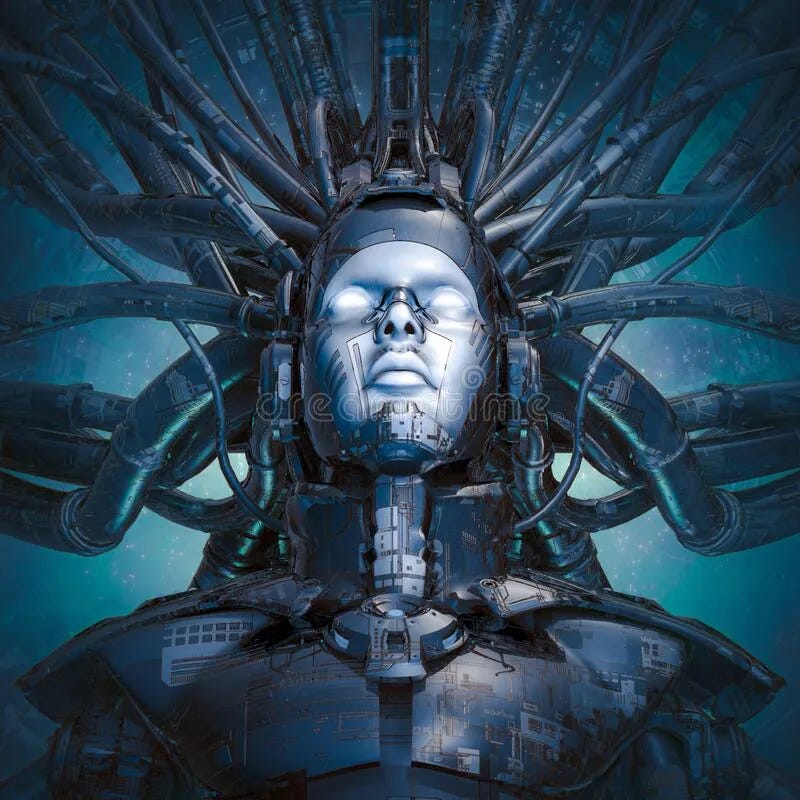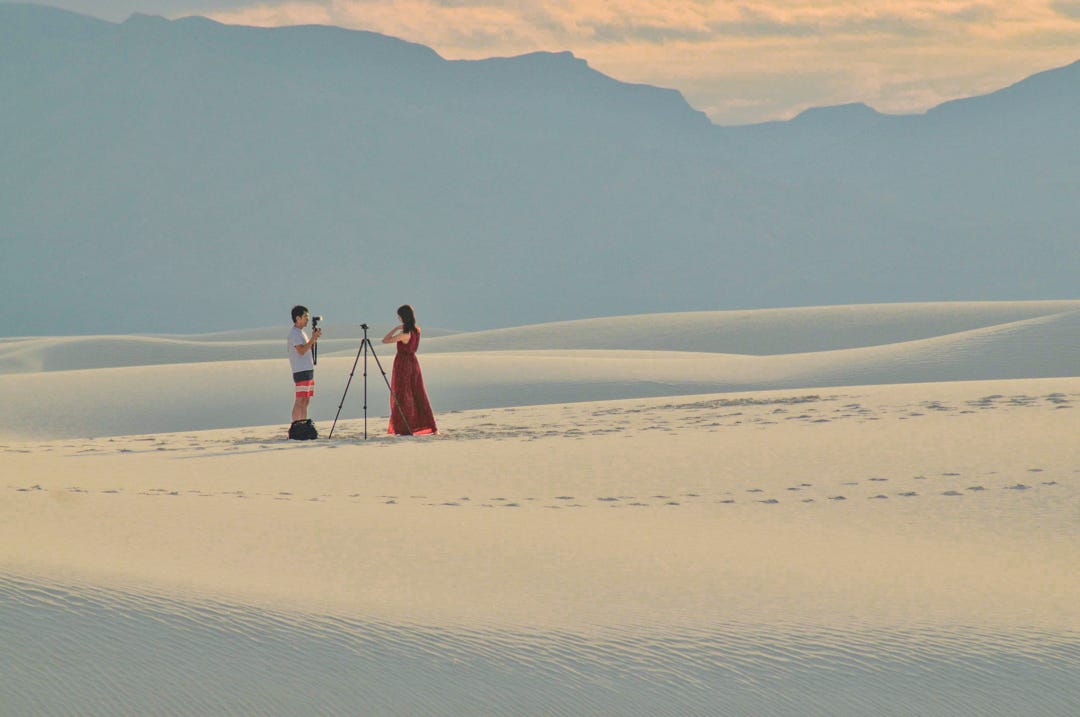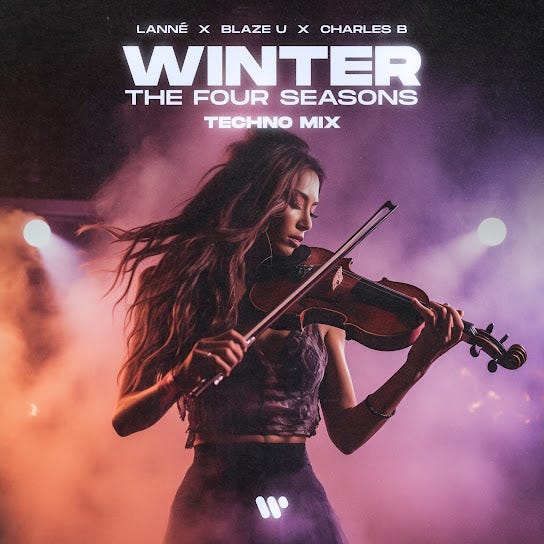In my previous post, No Place to Hide, I pointed out some of the dangers of AI when it falls into the wrong hands. It hasn’t fallen into anyone’s hands… we handed it to them. First it was handed to us. It was our brand-new shiny toy, and boy was it fun. Someone else saw all the fun we were having but recognized the toy held some other more sinister potential. Turning it into something useful, but only to them.
That was the previous post. Today I want to consider some other questions and concerns about AI. I want to talk about the ethics of AI use in art, music, and literature. I’m using “literature” in the broadest sense… written language. Whether that be a novel, a newspaper article, blog post, or Substack story. Can AI be used in an ethical manner in any of those endeavors?
The answer is yes, no, and maybe. It’s not an easy question to answer unless you consider the AI result and the way in which that result is presented to the public.
I struggle with these questions because I use AI as a tool in my writing. I don’t want AI to write for me, but I sometimes need some advice on organizing my ideas. I ask a lot of questions. Things like “is this the right word” or “does this idea make any sense?” “should I use a colon, semicolon or a comma or something else here?” and I frequently ask for spelling checks. In short I rely on Chat to be my 8th grade English teacher’s red pencil. Chat helps me with basic structural tools. I want feedback, but I don’t want to be pushed toward any idea that is not my own. Unless I am only trying to fool myself, I believe I am using the program in an ethical manner, but I understand others might not agree. I guess that puts the answer squarely in the “maybe” category.
In theory AI could create a story, a photo-realistic picture, or even compose a musical piece, but do we want it to do that? By making use of massive amounts of data, it could create characters, plots, settings, and come close to mirroring Shakespeare, Tolkien, or Faulkner. But it isn’t them. It lacks originality and soul.
Art, literature, and music all contain something of the creators—their life experiences, their dreams, fears, and joy.
My own writing reflects my life, even if the topic is not myself or my life. Some of me is there. My photographs are more than a simple capture of light and dark, more than the subject where my lens is pointed. You might not see me in those images, but I guarantee you, I’m there, and not just a shadow behind the lens.
AI simply cannot provide that. AI can mimic styles, but it cannot provide the depth that a human adds to their creations. Depth comes from our lived experiences.
When we debate the use of AI for creative purposes, we must ask ourselves where does human creativity end and machine voice begin? Is truth still present when a work is created by a machine? Are we being honest with our audience? Many of us are asking these questions every time we sit down to write.
These are not new questions; it’s not a new concern. There have been dozens, perhaps hundreds of academic studies, and whole books that ask the same questions.
Educators have been paying attention and have legitimate fears about the use of AI by students to complete assignments. Students are already regularly trying to get away with plagiarizing articles found on the internet to present as their own work. Is the use of an AI program such as ChatGPT any different?
Writer Benjamin Klass recently asked an important question: Are we heading toward one creative mind?
As the use of AI tools becomes more common in art, literature, music, and design, we might risk homogenizing creativity. AI could make everything begin to sound and look alike. Will the diversity of creativity be lost? Maybe, but I think human imagination will find a way to avoid that end.
I want to conclude this article with three examples of AI vs human creations.
Below are two images of White Sands, New Mexico. One is my photograph. The other was created by ChatGPT. Which one feels like it was created by a human? Is there any visible difference between the two (other than the angle and subtle difference in lighting)? One contains people one contains plants, one has a much more striking sunsetting sky. The mountains in one are much more pronounced and lighted by the warm desert sunset, the mountains in the other are much less well defined.
What makes one better than the other? Maybe you like the AI version better? If a computer can make photographs without human creativity, what is the message to us? Maybe I should just hang up my camera and stay home. Why seek out beautiful places if I can just use the computer to bring those places to me?
What was the process for the two images? I was there. I chose the moment, the composition, and the subject. I chose the camera settings for focus and exposure. The tool was in my hand. What I captured was real. The light, shadows, the soft rolling sand dunes, and sky are real.
On the other hand, with an AI creation… AI wasn’t there. It produced an image based on what White Sands should look like, based on learned patterns from millions of available photos. There was no light, no air, no real subject. It was created from assembled statistical patterns, not from experience. No one has ever seen that view because it doesn’t exist. I would love to know your own thoughts about these two images. Which is real? Please leave comments.
When I walk at the gym I usually listen to music. One piece that I especially like is Techno Mix: Four Seasons by Lanne and Blaze. It’s a high-energy version of Vivaldi’s classic piece. It is familiar yet different from his original creation, jazzed up by the addition of electronic beats and a more modern, high-energy rhythm. That transformation was done using today’s standard music production tools but was not created by AI. It is an example of what modern human creativity can accomplish with technology.
For more on modern music production: https://www.edmprod.com/what-is-music-production/
There are, however, several examples of AI-created music that you can locate with an online search. One of the best I have found is the AI version of what Ludwig Beethoven’s Tenth Symphony might have been.
At the time of his death in 1827, that piece was largely incomplete. He had left written notes and only a handful of passages. In 2021, an organization in Austria became interested in the idea of completing the symphony by means of AI in time for the composer’s 250th birthday.
A team of composers and AI experts worked together to integrate what Beethoven left behind with what AI would generate. For that to work, AI had to first learn from Beethoven’s entire body of work in order to fill in the many blanks left in his notes for the 10th.
Filling in those blanks was not simply left to AI alone. That would not have been possible without the creative thinking and guidance of the human team that pointed AI in the right direction, making it able to produce a finished symphony.
See this story for more information: https://www.smithsonianmag.com/innovation/how-artificial-intelligence-completed-beethovens-unfinished-10th-symphony-180978753/
For more on modern music production: https://www.edmprod.com/what-is-music-production/
Just a moment ago I asked ChatGPT the following : In a dozen sentences or less, why am I writing this piece? I I uploaded my rough draft . Based only on the draft I had uploaded for Chat to review, this is the reply to my request:
“This piece is my way of asking questions I don’t think we can afford to ignore. It’s my way of reminding myself — and maybe you — that the spark behind great art, music, and writing can’t be programmed. We can use AI as a tool, but we can’t let it become the voice. That’s ours to protect.”
That pretty much hit the nail on the head, although it does leave out my feelings of discomfort about my own use of AI. Am I using AI in an ethical manner? The AI response came from the words I fed to it, but also from sources dug from the far corners of the internet.
Generally the agreed-upon ethical uses of AI in creative endeavors are something along the following lines:
Using it as a tool, not a replacement.
Being transparent about how AI was used.
Not trying to pass off AI work as your own.
AI is ethical in creative work when it amplifies human creativity without replacing the human heart and mind in the creation.
If AI presents information, care must be taken to double-check the validity of facts provided and be aware that even AI can present plagiarized information.
Do those seem fair uses to you? You will have to answer that question for yourself.
Will we have technology or human creation, or a combination of those? We have entered an age when a machine can imitate us. Is that something to fear or something to embrace? I believe we can embrace the technology as long as we remember to use it as a tool, not as a crutch. Technology can’t dream, it can copy but it can’t feel. Those are important distinctions and it is our duty to not blur those differences. Our work must carry the echos of our heart, mind, and soul…the things AI can never do. I look forward to your comments.
Thanks for reading, your support is greatly appreciated. Please share or recommend to friends.










Wickipedia is an example of a collective mind that all of us can contribute to to create a collective knowledge. As we enter writings, thoughts, and knowledge into various aspects of the internet, AI can glean the information to create a collective knowledge that can be used by all. I have found CHATGPT amazing, but know of one analysis with numbers where it sent back contradictory information within the same document; I noted the discrepancy and it corrected it.
Your lower real photo has more clear detail and is fascinating to view in detail and appreciate, not the AI one above. Alan